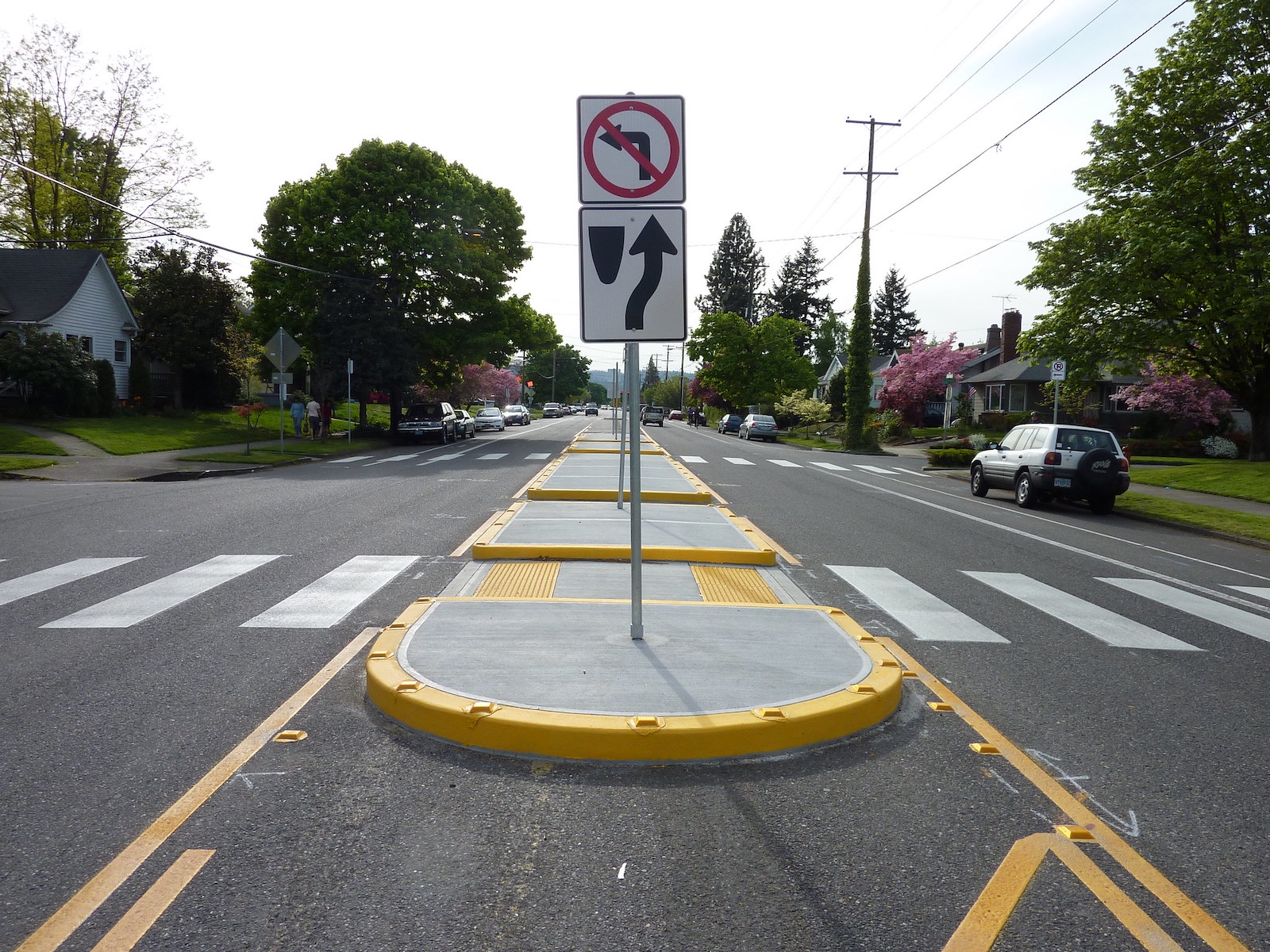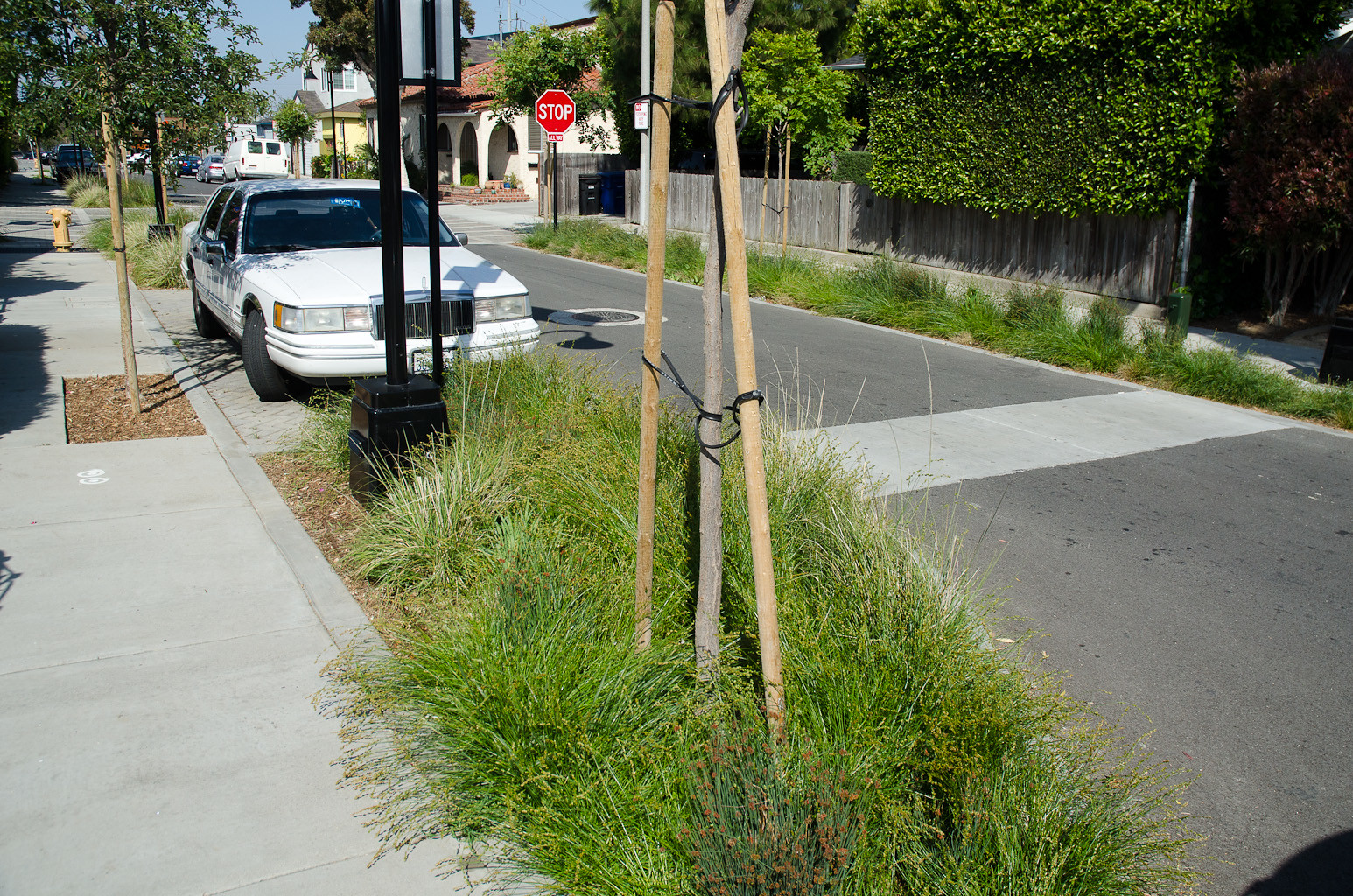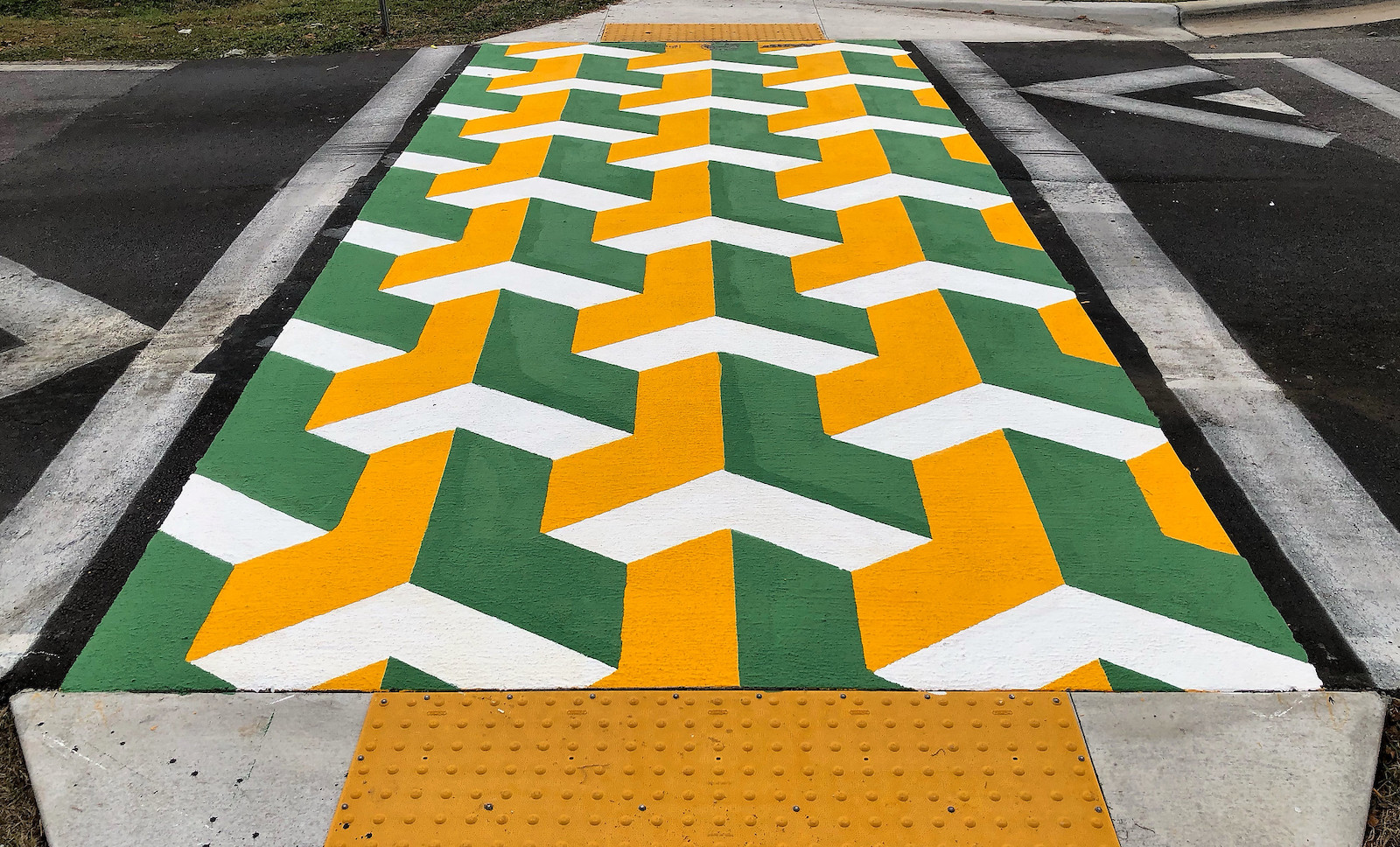A traffic calming project in Seattle turns reclaimed street space into parks.
Photo by SDOT Photos used under CC BY-NC 2.0 DEED
Around the world traffic calming efforts are used to create safer, more enjoyable streets for everyone. Speed humps, traffic circles, narrowed roadways, and more can reduce cars’ speeds, prevent collisions, and make cities more attractive and walkable.
Milwaukee’s commitment to safe streets
Milwaukee, Wisconsin, is a great case study for this work: this year, more than 50 new traffic calming projects are being rolled out to improve city streets and address reckless driving. We talked to Mike Amsden, multimodal transportation manager for Milwaukee’s Department of Public Works. Amsen says Milwaukee’s “complete streets policy is aimed at making our streets safe and enjoyable for all users, no matter their age, their ability, or the mode [of transport] they're using.”

A pedestrian island in Portland, Oregon. Photo by Greg Raisman used under CC BY-NC-SA 2.0 DEED
What is traffic calming
According to the Project for Public Spaces, traffic calming design and management strategies are “founded on the idea that streets should help create and preserve a sense of place, that their purpose is for people to walk, stroll, look, gaze, meet, play, shop and even work alongside cars - but not dominated by them.” In other words, traffic calming helps reduce the negative impact of car traffic, while encouraging and enabling more sustainable modes of travel.
Traffic calming often includes the use of physical barriers to slow vehicles, such as speed bumps and raised crosswalks. Curbs can be built out further, reducing the distance pedestrians must cross at intersections, and forcing vehicles to slow as they turn. Medians and refuge islands decrease the size of lanes, slowing vehicles, and providing protection for crossing pedestrians. Roundabouts and lane shifts can also help encourage slower traffic.
Sustainable streets
The engineering components of traffic calming can also be used to make city streets more beautiful and eco-friendly. Larger curbs, medians, and roundabouts provide space for planters and gardens, which can improve the management of rainwater and make space for growing native food plants. One study in the UK found that roundabouts can host incredible biodiversity, especially for beetles, birds, and bugs.
And of course, by making streets safer, traffic calming can encourage more sustainable modes of travel. Emerging research suggests that walking and biking, as well as use of other micro-mobility modes, become more widely used when streets are safe for those users.

A bioswale in LA can collect polluted runoff and filter it into the sewer system. Used under CC BY 2.0 DEED
Building safe corridors for travel
Amsden says the intention for many projects in Milwaukee, such as those on Walnut Street, are to create “long continuous corridors of safe streets that provide options for people to travel along them.” Walnut St in particular connects low-income, predominantly Black neighborhoods to work, culture, and leisure in Milwaukee’s downtown.
“Walnut is one of those streets that before the 1960s was a very narrow two-lane street with Incredible density and Commercial mixed uses,” Amsden says. “Through urban renewal [Walnut] was turned into this very wide four lane boulevard street by removing many houses and businesses. So we've been focusing on reimagining all that.”
The new Walnut Street includes two protected bike lanes, one in each direction, a bus boarding island, speed humps, and raised crosswalks. It also includes a bioswale, which, like a rain garden, can capture water and snow runoff. Bioswales are specifically intended to deal with polluted water, filtering it before sending it into the sewer system.
Seeing results
In Milwaukee, data is already showing results. While traffic calming projects have a whole range of goals, it’s quickest and easiest to collect data on the occurrence of dangerous speeds. Here, Milwaukee is seeing promising progress: E Oklahoma Ave showed a 37% decrease in drivers over the speed limit, and W Lapham Blvd showed a 69% decrease in drivers traveling over the speed limit.
Anecdotally, the city is seeing broader positive shifts. Community members say they feel safer. Popular learn to ride courses should help more people get on the roads. And a safe routes to school program should enable children to walk to school safely. With time, additional data collection is needed to enable a fuller picture of progress, such as bike ridership numbers. But in the meanwhile, the reduction of top speeds is important: it means less danger for drivers and pedestrians alike.

A raised crosswalk near a school is painted to attract drivers’ attention and encourage them to slow down in Tallahassee, Florida. Photo by readerwalker, used under CC BY-NC-SA 2.0 DEED
The future
Moving forward, the city will continue rolling out its transportation and mobility plan, which includes opportunities for people to create plazas, paint crosswalks, and reclaim street space with seats and planters. Overall, Amsden says, the hope is to “create senses of place and have pride and ownership.” Amsden is also looking forward to seeing e-bikes become more prevalent in Milwaukee. E-bikes tend to make micro-mobility more accessible, for example, for older adults and those with disabilities by reducing the physical fitness required to ride them for longer distances.
But how can those of us excited by the prospect of safe, beautiful, and enjoyable streets bring them to our own towns? “Find a champion,” Amsden says. “Celebrate successes…and make sure people are clear that failing is ok…that’s how you learn.”
